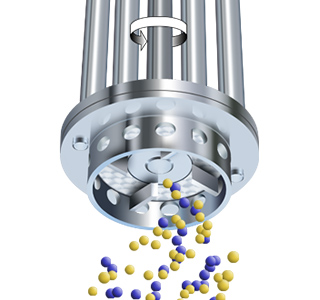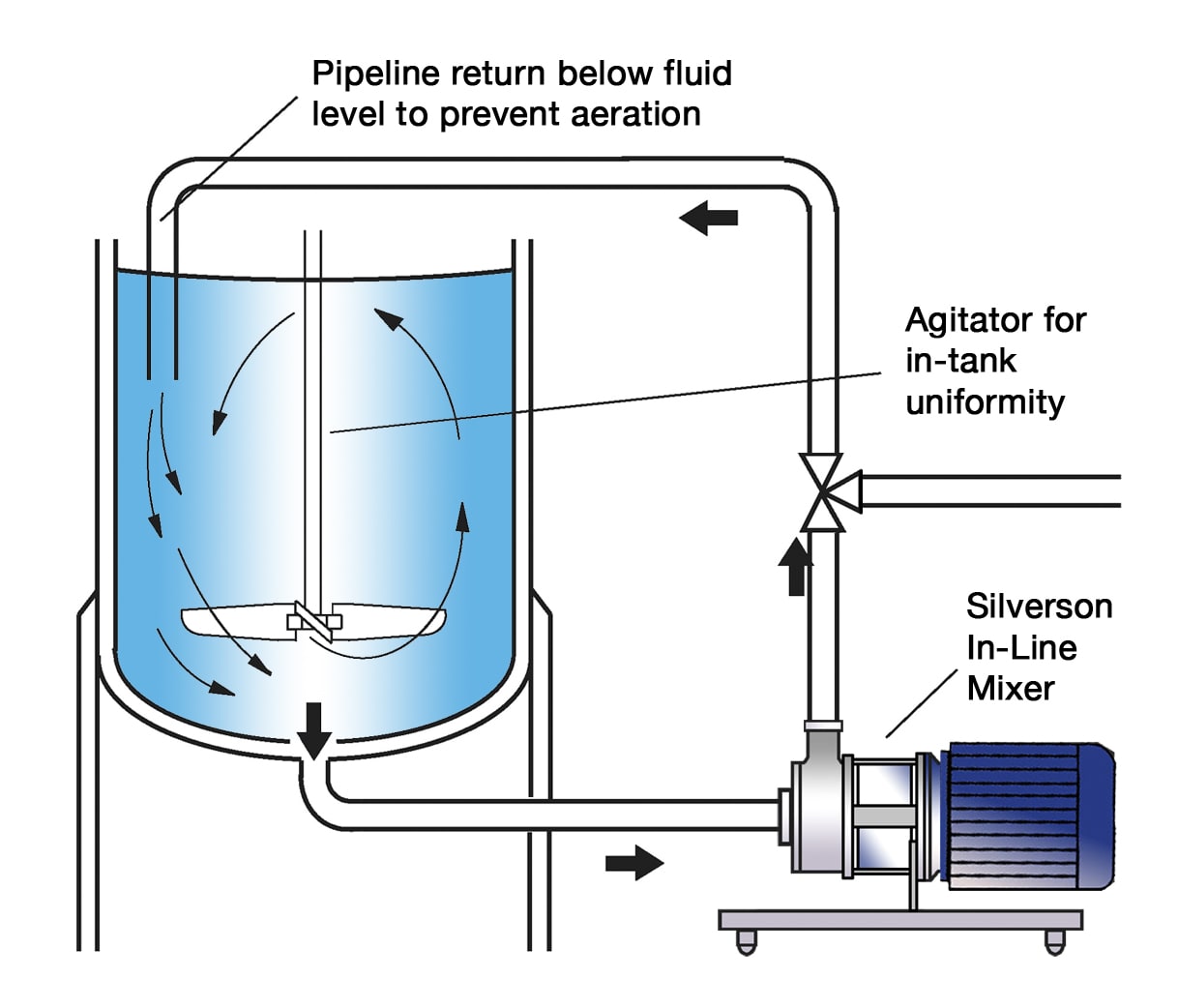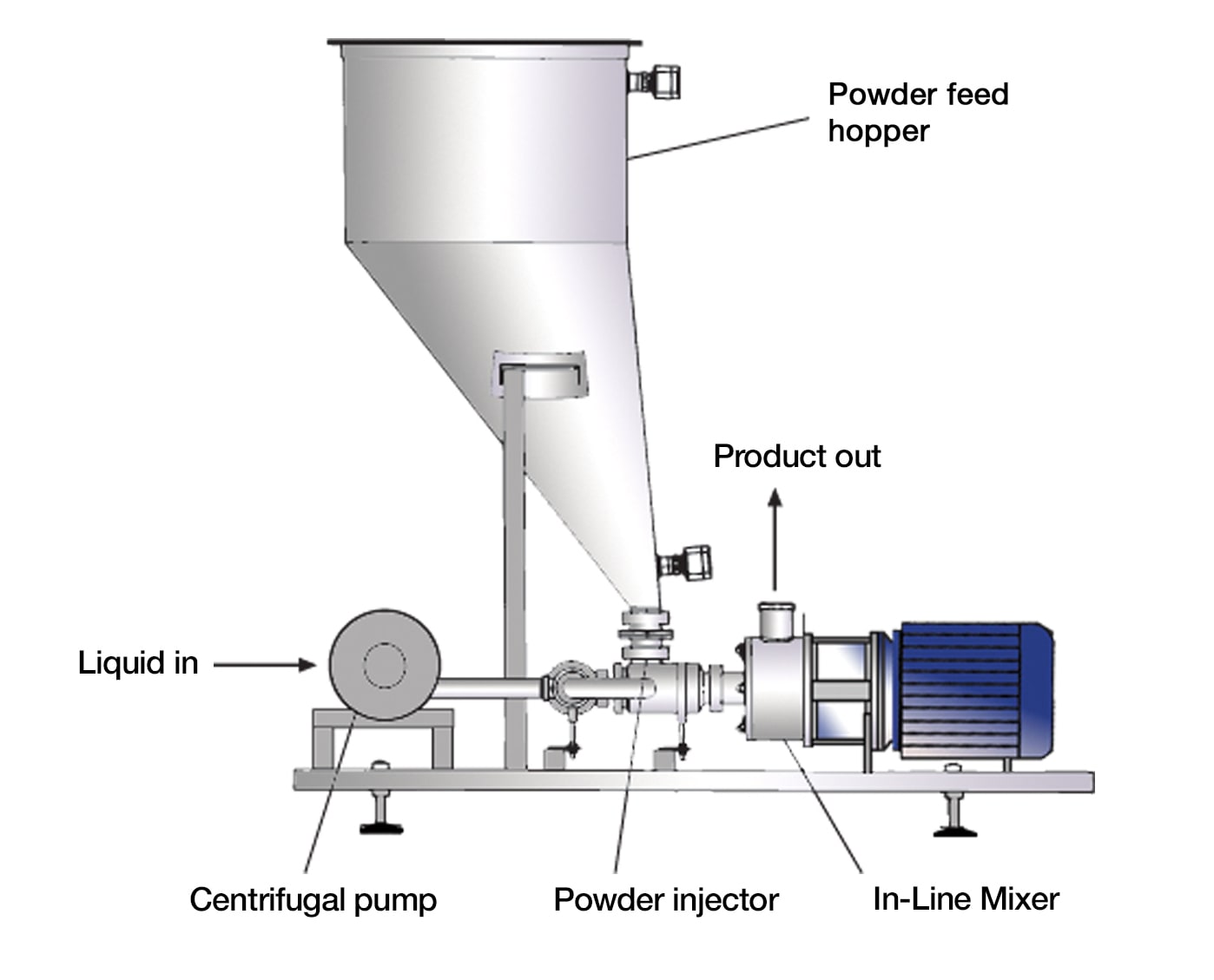Dispersion of Fumed Silica
Fumed Silica (also called colloidal silica) is a fluffy white powder with an extremely low density, marketed under trade names such as Aerosil®* and Cab-o-sil®*. With both hydrophobic and hydrophillic grades available, it is widely used as a rheology modifier, imparting highly thixotropic properties at relatively low percentages. It can also provide increased tack, better stability in suspensions and prevents “sagging” and settling of solids in a liquid system. For this reason it is particularly suitable for coatings, inks, adhesives, resins, sealants and greases.
Fumed silica is also used in some pharmaceutical and cosmetic applications.
*Registered trademarks of Evonik Industries AG and Cabot Corp. respectively
The Process
Despite the diversity of end uses and the various processing methods and equipment used, (ranging from simple agitators to milling equipment) there are a number of common processing requirements which must be satisfied in order to obtain maximised “functionality”:
- Mixing equipment must be capable of rapidly incorporating and dispersing the powder into the base liquid.
- Shear is required to obtain functionality. The dispersion equipment used has as much of an effect on the viscosity obtained as the concentration of fumed silica. This must be taken into account when formulating products or altering processing conditions.
- Vigorous in-tank movement must be maintained as the viscosity rises.
The Problem
Using conventional mixers and agitators, a number of problems can be encountered during production:
- The powder is very low density and is extremely difficult to “wet out”; it floats on the liquid surface.
- As the powder is extremely fine it poses real problems due to dusting.
- Long processing times are required to fully disperse the powder once it is wetted out.
- Low shear mixing devices are generally unsuitable for dispersing fumed silica. Whilst the powder may be wetted out, the lack of high shear mixing results in poor yield of thickening effect.
- Formulations often contain excessive percentages of fumed silica to compensate for poor yield.
- Incorrect dispersion can lead to great inconsistency between batches, especially when excessive loadings have been used to compensate for poor yield.
The Solution
These problems can be overcome by using a Silverson High Shear mixer. The advantages stem from the 3 stage mixing action of the Silverson rotor/stator assembly. Operation is as follows:

Stage 1
The powerful suction created by the high speed rotation of the rotor blades draws both liquid and solid ingredients into the workhead where they are rapidly dispersed.

Stage 2
Centrifugal force drives the materials to the periphery of the workhead where they are subjected to a milling action in the precision gap between the tips of the rotor blades and the inner wall of the stator.

Stage 3
The product is expelled from the head and projected back into the body of the mix. Fresh materials are simultaneously drawn into the head. In a short mixing cycle all the material passes through the workhead many times, rapidly becoming fully dispersed.
-
Stage 1

Stage 1
The powerful suction created by the high speed rotation of the rotor blades draws both liquid and solid ingredients into the workhead where they are rapidly dispersed.
-
Stage 2

Stage 2
Centrifugal force drives the materials to the periphery of the workhead where they are subjected to a milling action in the precision gap between the tips of the rotor blades and the inner wall of the stator.
-
Stage 3

Stage 3
The product is expelled from the head and projected back into the body of the mix. Fresh materials are simultaneously drawn into the head. In a short mixing cycle all the material passes through the workhead many times, rapidly becoming fully dispersed.
The Advantages
- Fine dispersion results in improved product quality, stability and repeatability between batches.
- Agglomerate-free mix.
- Shorter processing times reduce wear to mechanical parts.
- Hard tipped rotors and hard surfaced shafts are available as optional extras where abrasive materials are processed.
- Some grades of fumed silica are “pumpable” and behave like fluids. The powder can then be pumped from containers directly into the rotor, eliminating dusting/handling problems.
Immersion units for batch operation, In-Line devices and Flashblend powder/liquid mixing systems are used for the application, the selection of which depends on factors including batch size, raw materials and the viscosity of the end product:
High Shear Batch Mixers
- Suitable for small batches
- Units for ATEX Category 2 duties available
- Sealed units available
- Special units for abrasive products available
Silverson Ultramix
- Excellent in-tank movement
- Capable of rapidly incorporating large volumes of powders
- Ideal for higher viscosity mixes
- Ultra Sanitary CIP design
- Units for ATEX Category 2 duties available
- Low maintenance
High Shear Bottom Entry Mixers
- Normally used in conjunction with an anchor stirrer/scraper on high viscosity products; can be used alone on lower viscosities
- Units for ATEX Category 2 duties available
High Line In-Line Mixers
- Ideal for larger batches
- Aeration free
- Must be used in conjunction with an efficient in-tank agitator to wet out powder
- Easily retrofitted to existing plant
- Self-pumping, depending on product viscosity
- Multistage units available for higher degree of shear
- Units for ATEX Category 2 duties available
- High Viscosity models available
Silverson Flashblend
- Ideal for larger batches
- Capable of rapidly incorporating large volumes of powders
- Controlled powder addition rate
- Minimum operator input required
- Can be integrated with bulk powder dispensing systems e.g. Big Bags (FIBCs)
- Classified as ATEX Category 2 D T3
- Silverson should be consulted regarding systems involving solvents




